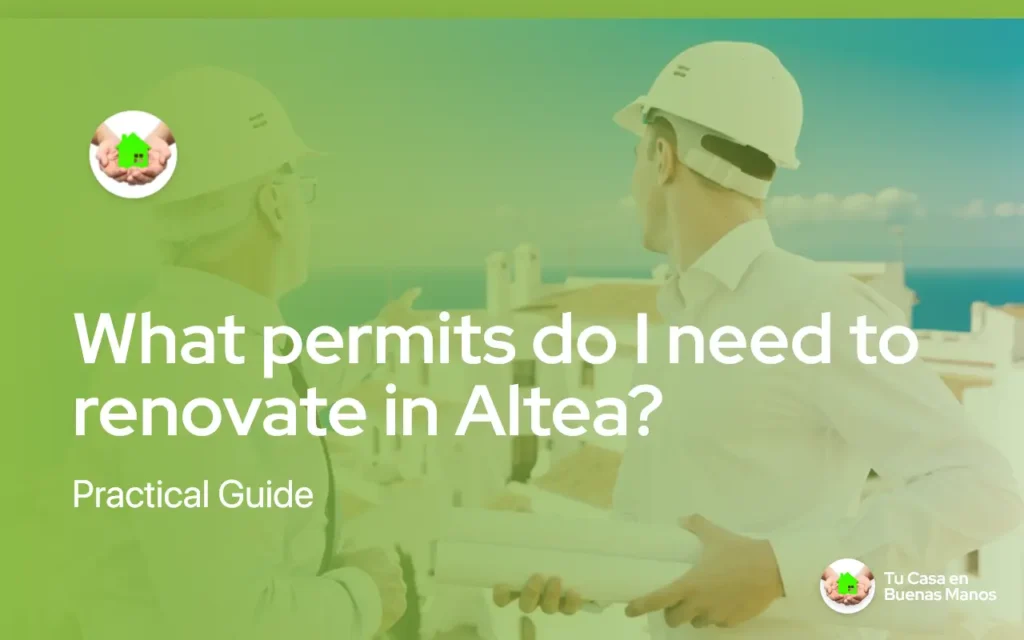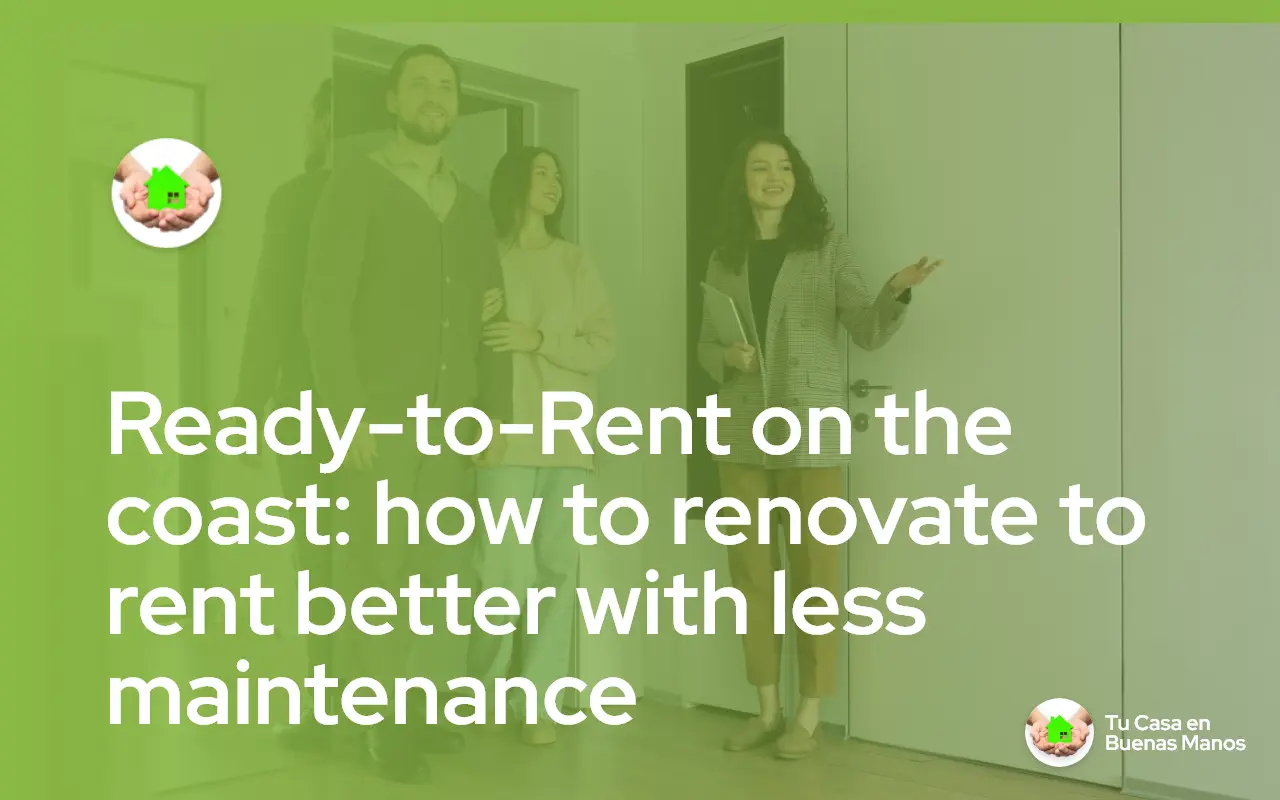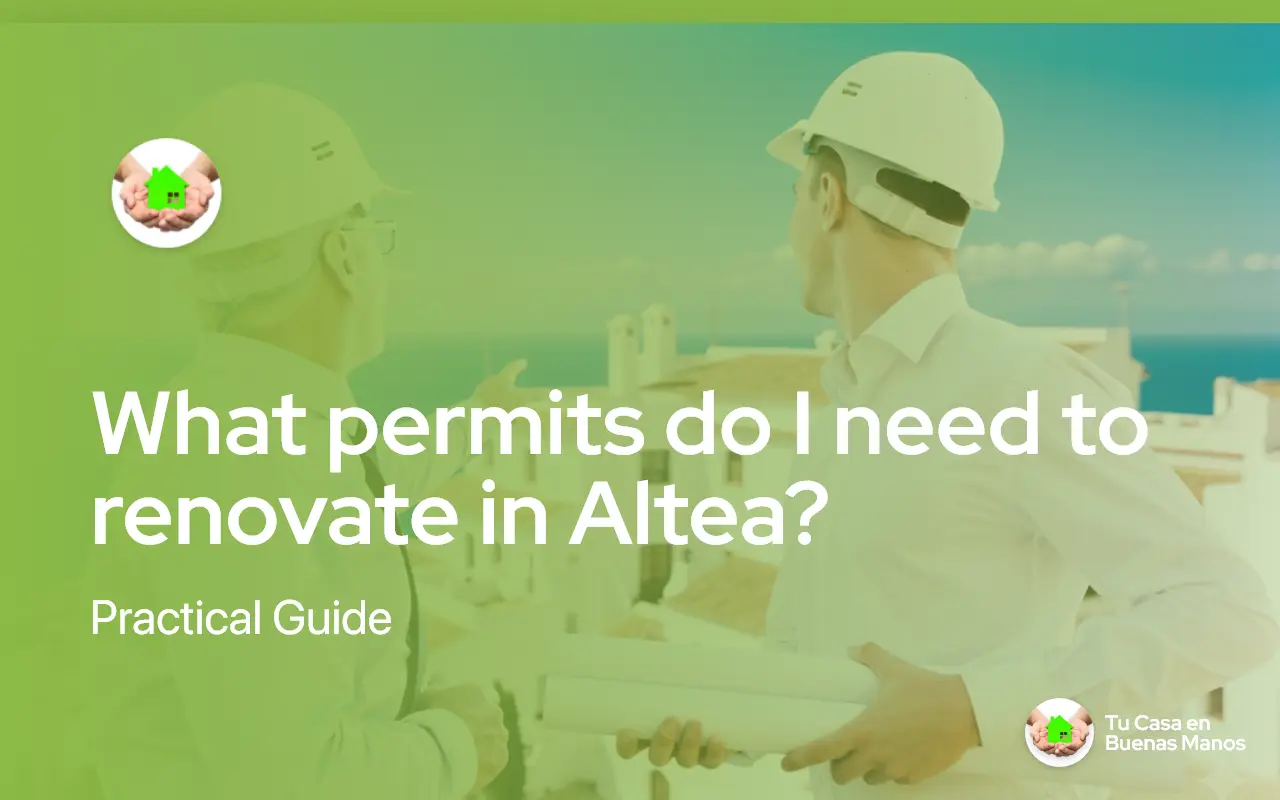Last review: 29/09/2025 · Goal: help you file correctly on the first try—no surprises.
Note (2025): this guide is updated with current municipal criteria and real project examples so you can decide with confidence.
Do I need a permit to renovate my home in Altea?
Golden rule: every intervention should be reported to the town council. In day-to-day practice you’ll mostly use either a Responsible Declaration (Declaración Responsable, DR) —fast, for interior works with no structural or façade impact— or a Works License (Licencia de Obra) —slower and project-based.
From experience, when a submission includes before/after plans, a clear technical brief, and a broken-down budget, turnaround times are shorter and there are fewer requests for corrections.
Responsible Declaration (DR) vs. Works License (what each one is)
Responsible Declaration (DR)
Best for interior refurbishments that do not affect structure, façade, or roof and do not increase building volume. You usually self-assess fees, upload documents, and can start after filing (per municipal procedure).
When there’s a layout change, I prepare plans and a brief to justify habitability and compliance with the Spanish Building Code (Código Técnico de la Edificación, CTE)—that’s often the difference between a quick “ok” and a formal query.
Works License
Mandatory if there’s structure, visible changes to façade/roof, or extensions. Requires a stamped technical project and Site/Technical Supervision (Dirección Facultativa, DF).
On structural jobs I plan with extra buffer: calculations, details, health & safety, and waste management from day one. It pays off.
Quick table: which procedure fits?
| Action | Permit | Key Note |
|---|---|---|
| Painting, changing floors and tiles | Responsible Declaration | Simple report and defined scope |
| Kitchen/bathroom renovation (no structure) | Responsible Declaration | Plans and equipment sheets help |
| Change interior layout | Responsible Declaration | Architect required for codes/habitability |
| Replace windows without changing openings | Responsible Declaration | Thermal and acoustic data required |
| Visible works on façade | Building Permit | May require aesthetic/urban criteria |
| Roof without structural changes | Responsible Declaration | If slope/system changes → permit |
| Structural reinforcement or demolition | Building Permit | Project + safety and shoring |
| Extensions and enclosures with volume | Building Permit | Check alignments and urban loads |
Pro tip: if you’re unsure between DR and License, email Planning (Urbanismo) with a 1-page brief + 2 plans. They’ll confirm the fit and you’ll avoid back-and-forth.
Documents and fees: what they really ask for
- Project identification & location with PEM (Presupuesto de Ejecución Material—Material Execution Budget) and scope.
- Plans of existing and proposed, dimensioned and legible.
- Technical brief or project (depending on procedure) and itemized budget.
- Code compliance where layouts change (habitability and CTE).
- Self-assessment of municipal fees (Tax on Construction, Installations and Works —ICIO— plus admin fee).
- Construction & Demolition Waste (RCD) management and Health & Safety (SyS) where applicable.
- Public space occupancy permit if you place scaffolding or containers.
In my practice I always attach a one-page index PDF listing every file with a one-line description. Since doing that, correction requests have dropped a lot.
Before you start works that require a License: mandatory pre-start items
- Execution Project consistent with the project granted the license.
- Acceptance of Site/Technical Supervision (DF) and contractor identification.
- Deposits/guarantees for affected urbanization works and RCD deposit for the authorized waste manager.
- Energy Performance Certificate (CEE) where required and Telecommunications Infrastructure Project (ICT) if applicable.
- Photo report of surroundings when asked.
Sensitive areas, heritage, and temporary works
- Heritage: you may need a 1:50 measured survey, a Building Evaluation Report (IEE) in old or listed buildings, and Regional Culture Department authorization. Allow roughly three months for decisions on heritage-relevant interventions.
- Temporary works: fences, trial pits, scaffolding, site huts, marquees, or temporary parking can be authorized for a limited time with a commitment to remove them without compensation. Handy when you need auxiliaries or temporary setups.
Typical cases and how I handle them
Kitchen/bathroom
DR with installation plans and finishes brief. I add a ventilation sketch and product datasheets. Result: smooth processing.
Moving partitions
DR with an architect. I include a surface schedule and justify daylight/ventilation. Prevents queries and speeds review.
Façade and windows
If you change openings or visible finishes, treat it as a License. I ask for a pre-meeting on design criteria if there’s aesthetic protection. Saves time.
Structure and roof
With structure, it’s License every time. I set out phasing and propping in writing and include it in the H&S plan. You gain control and safety.
Express checklist for submissions
| Item | Responsible Declaration | Permit |
|---|---|---|
| Before/after plans | ✅ | ✅ |
| Technical report | ✅ | ✅ (within project) |
| Visado project | — | ✅ |
| Building codes/habitability (if layout change) | ✅ | ✅ |
| Waste & Safety plan | ⚠️ depends on scope | ✅ |
| Taxes & fees (ICIO) | ✅ | ✅ |
| Street occupation (scaffolding) | ⚠️ | ⚠️ |
Final recommendations to avoid stumbles
- Define the scope and map it to the table above.
- Quick check with Planning if there’s doubt on procedure or protection status.
- Prepare your file with crisp plans, a clear brief, and a measured, itemized budget.
- Self-assess fees and submit.
- Start of works: with DR you usually start right after filing; with a License, wait for the decision and submit the pre-start items.
- During works: stick to what’s authorized; if you change relevant aspects, notify.
- Close-out: keep RCD documents, certificates, and—if applicable—the completion certificate.
FAQs
Can I start once the Responsible Declaration (DR) is filed?
Generally yes, once it’s registered and fees are paid. If the council sets a minimum wait, follow it.
When do I need an architect?
For layout changes (habitability and CTE) and for Licenses involving structure, façade, roof, or increased volume.
What if I start without filing?
Risk of stop-work, fines, and a legalization process—usually slower and more expensive.
How long does it take?
DR: typically fast if the file is tidy. License: depends on reports—build in buffer.
Old or listed building?
Expect extra reports or IEE; seek advice early and attach photos and fact sheets.
Short table: major works—must-haves
| Block | What to check | Key tip |
|---|---|---|
| Project | Basic for permit and Execution before starting | Ensure consistency |
| Economic | Taxes, ICIO and deposits | Self-assessment upon submission |
| Sector-specific | Heritage, Waste, Safety, Energy Cert., ICT | Ask for guidance if in doubt |
Official sources consulted (Altea Town Council)
- DR – Works & Installations (classification of works and documentation). Altea Town Council, 2024. Official PDF. [Accessed: 09/2025]. View the official procedure (PDF) from Altea Town Council
- Building License: new build, structural alteration, change of use and temporary works. Altea Town Council, 2024. Official PDF. [Accessed: 09/2025]. More details in the municipal regulation (PDF)
- What permits do I need to renovate in Altea? - September 29, 2025




